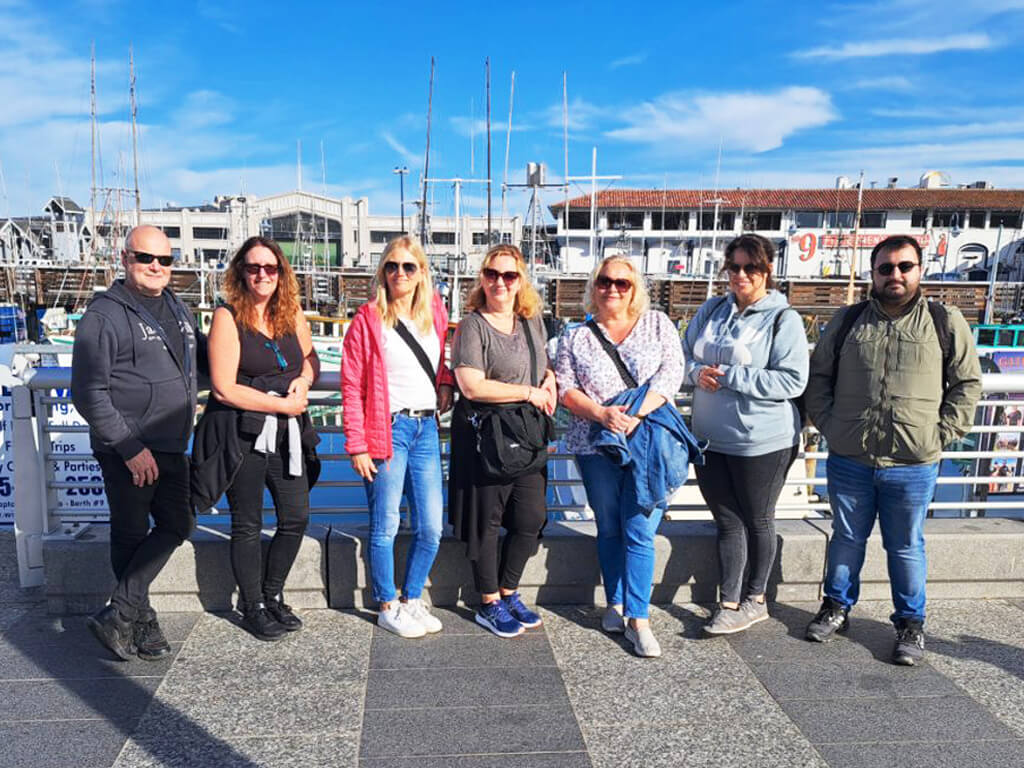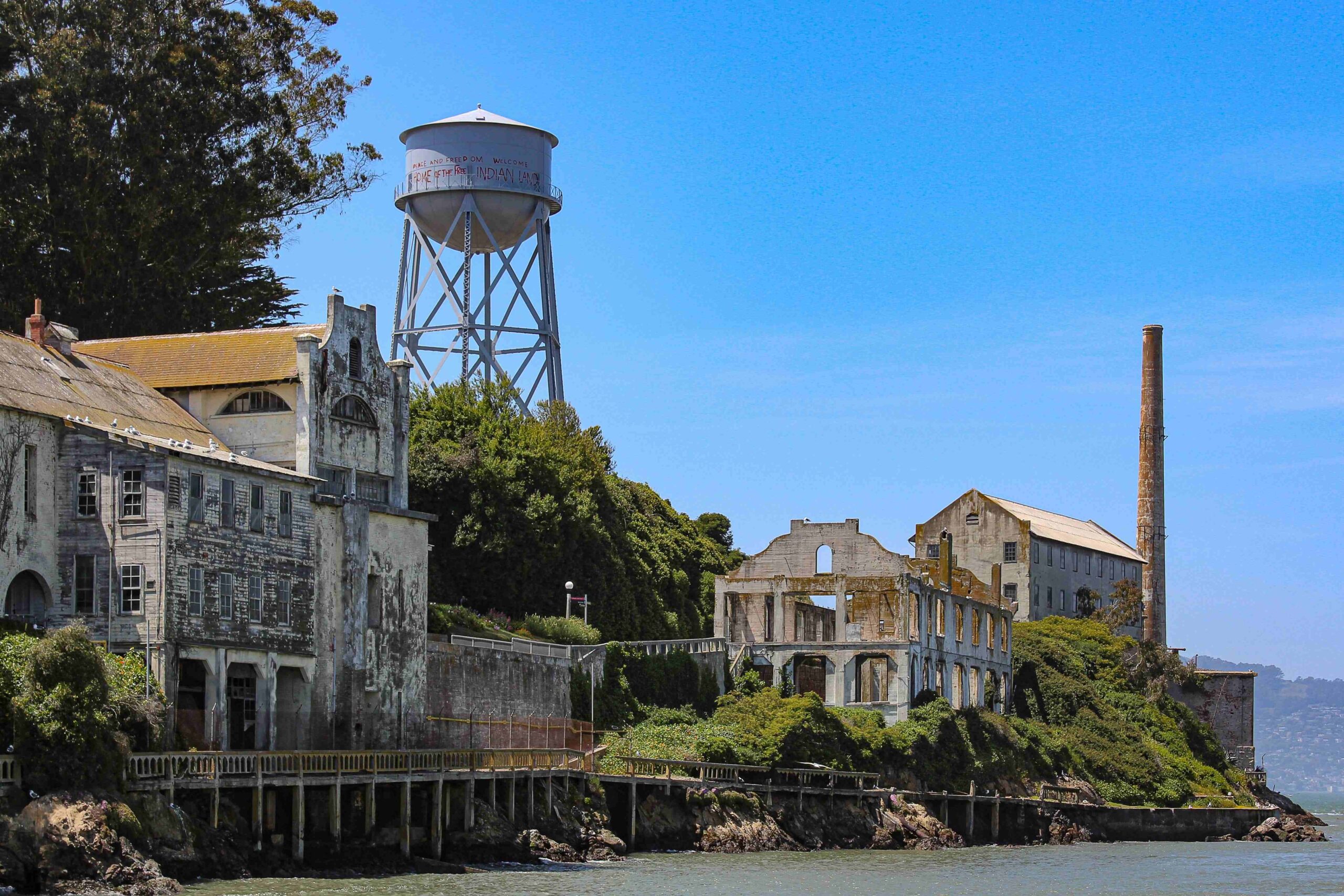
How To Hike the Agave Trail on Alcatraz Island
Visiting Alcatraz and want to enjoy a pleasant hike? I recommend the Agave Trail!
Managed by the National Park Service, Alcatraz is a nature destination in its own right with plenty of trails, flowers, fauna, and scenery.
Sure, most people visit Alcatraz for the history — the prison, the Native American occupation, the numerous failed escape attempts. But I’ve lived in the SF Bay Area for over 20 years, and believe me, heading straight up the hill to the cellhouse, camera and audio guide in hand, will make you miss what many consider to be the island’s best-kept secret.
When I visit the Rock, I like to hike the various trails that offer gorgeous views along with an opportunity to see birds and wildlife. The most famous of these is the Agave Trail. Here, you can take a break from the crowds that dominate the prison area and enjoy unspoiled natural beauty on this gorgeous island park.
Among the many things to do on Alcatraz Island, the Agave Trail is certainly the path less-traveled, but that just makes it all the better. Here are my tips for hiking the Agave Trail on Alcatraz Island.
When to hike the Agave Trail on Alcatraz

Unfortunately for summer tourists, the trail closes every year during peak bird nesting season, which is February through September. This is to protect the island’s important bird populations that nest on the rocky shores, including cormorants, pigeon guillemots, and black-crowned night herons.
If you’re planning a visit specifically to hike the Agave Trail, aim for October or November. You’ll avoid the summer fog and the heaviest summer tourist travel and catch some of our clearest days for photography. This time of year is also when you’re most likely to spot wildlife, which tends to be more sparse during the blaring heat of summer.
The Agave Trail tends to be open at other times of year outside summer. Still, a winter storm occasionally will cause a temporary closure, so check the NPS website if the forecast looks treacherous.
Best time of day for hiking on Alcatraz
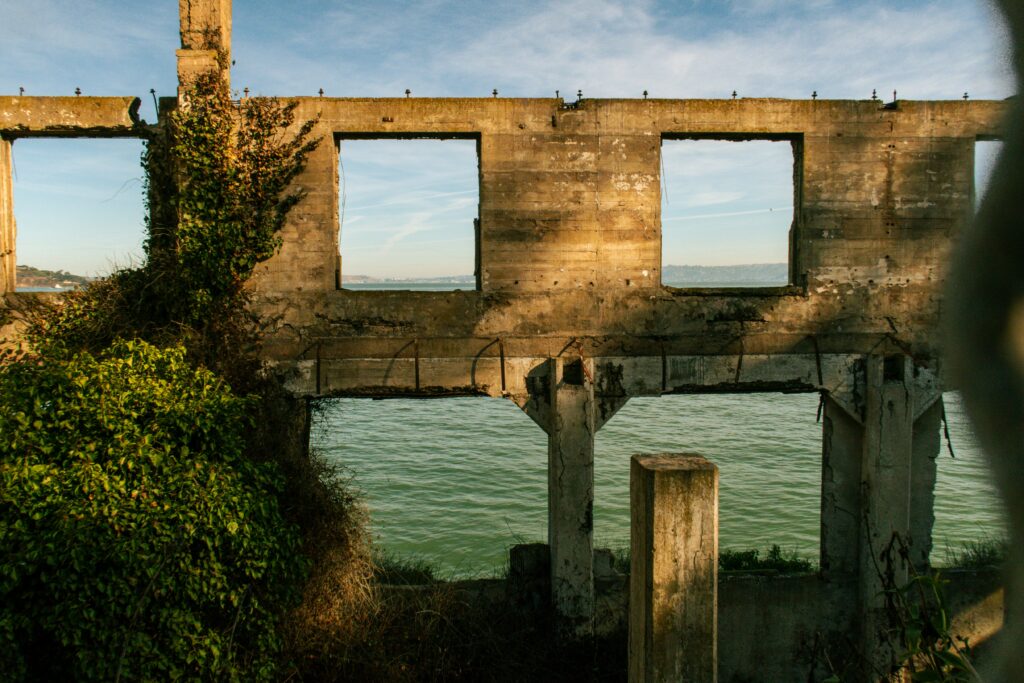
If your itinerary focuses primarily on getting the perfect shots or having the quietest, most peaceful experience, consider skipping the tourist-packed morning boats. The late afternoon ferries are less crowded, and the afternoon light on the western exposure of Alcatraz makes for better photos anyway.
Taking one of the later ferries (around 2-3 p.m.) still gives you plenty of time to explore the Island before the last return ferry.
That said, if you want to see burrowing owls, deer mice, or any other wild inhabitants on the island, it’s best to get the first ferry possible in the morning (usually around 9 a.m.), when they’re most active.
Where to find the Agave Trail
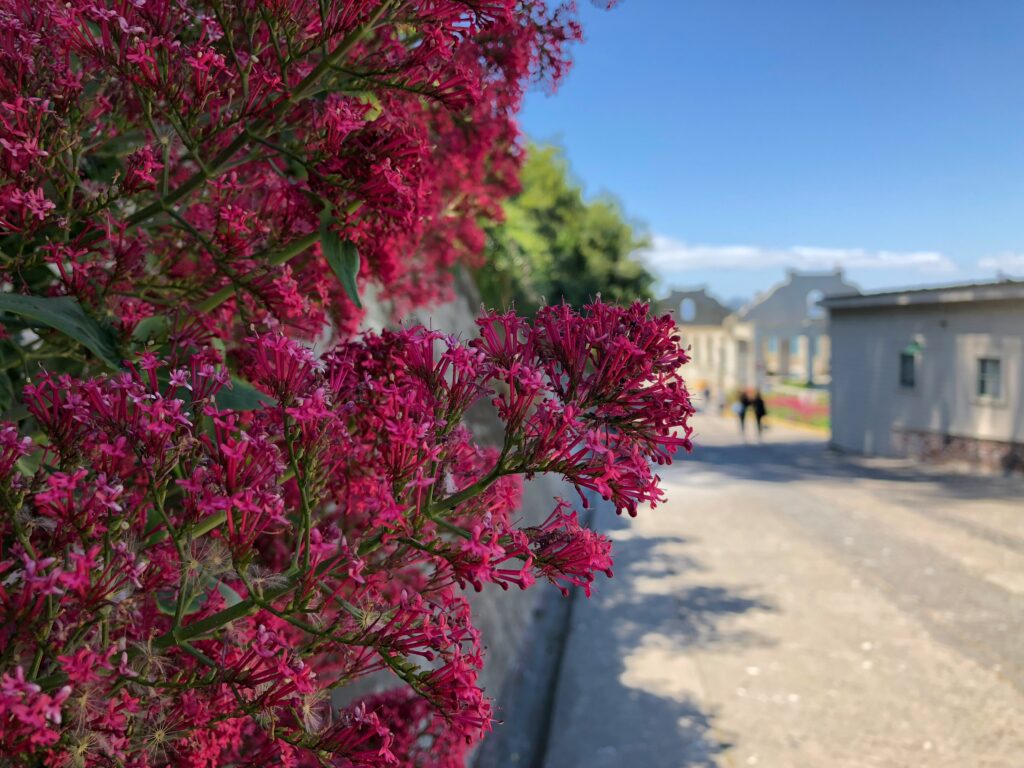
You’ll start your hike just south of the dock where the ferry lands, beginning on a stone-lined path that goes through a grove of eucalyptus before dropping down towards the water.
From here, on a clear day, you’re likely to get glimpses of sailboats, as well as the Bay Bridge and downtown.
As the trail curves around the island’s south side, you’ll pass the large sign you may have glimpsed from the ride over on the ferry: “persons procuring or concealing escape of prisoners are subject to prosecution and imprisonment.”
Just after that, you’ll come to a spot on the shore where the island’s rocky tide pools are exposed — at least, if you’re lucky, and it happens to be low tide. Tide pools are unusual in the San Francisco Bay. These are actually human artifacts, accidentally created from the rubble formed by years of blasting and building on the island.
From here, the Agave Trail heads uphill to the stone parade grounds, which were carved by prisoners in the 1870s. At one point, this area was surrounded by tiny homes for Alcatraz guards and their families. But these were demolished in 1971, leaving debris scattered across the concrete expanse.

Today, these rubble heaps shelter many creatures that call Alcatraz Island home: burrowing owls, night-crowned herons, Western gulls, salamanders, and deer mice (the only mammals still living on the island full-time). Birdwatching on Alcatraz Island is some of the best in the Bay Area, particularly on this quieter part of the island.
Your efforts to hike up the hill pay off, and you’re rewarded with beautiful views of Treasure Island, the Golden Gate Bridge, the Bay Bridge, and the steep green cliffs of the Marin Headlands (which always remind me a bit of Ireland).
At this point, you’ve reached the end of your moderate hike. You’ll head back the way you came — this is an out-and-back trail rather than a loop. The total distance is just 0.7 miles, about 20 minutes each way if you’re going at a leisurely pace.
Best views from Alcatraz
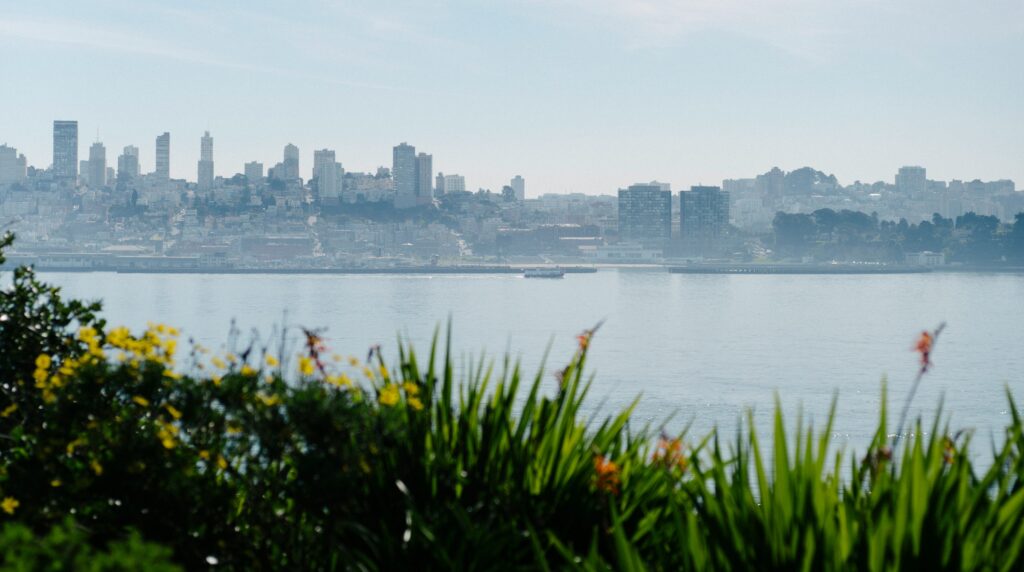
One thing that I love about hiking the Agave Trail is the special perspective of seeing the city from sea level — not the elevated views tourists get from Twin Peaks or Coit Tower. This vantage point helps you understand the desolation that prisoners (and sometimes the guards and their families) felt here and why the indigenous Miwok people called the island the “place of evil spirits.”
When the afternoon westerlies kick up, and waves crash against the rocks below you, it’s easy to feel the island’s isolation despite the city being tantalizingly close.
The island’s microclimate has created a surprising diversity of plant life along the trail. You can’t miss the massive agave plants that give the trail its name. They were planted by guards as a deterrent for would-be accomplices for escape attempts as well as for the alcohol you can make from them. You’ll also spot California poppies, wild radish, native grasses, and more. In winter months, you might catch migrating monarch butterflies taking shelter in the protected coves.
Alcatraz history for your hike

What I appreciate most about the Agave Trail is experiencing Alcatraz without someone talking in my ear. This path wasn’t just off-limits to the public during the prison years — it was part of the security perimeter where guards patrolled to prevent escapes.
When you walk it now, you’re literally following in the footsteps of guards who kept watch over some of America’s most notorious criminals. And you’re out of earshot of the crowds that tend to stick to the prison cells and dock area.
About halfway along, look up to see the prison buildings from angles most visitors miss. The perspective of the cellhouse from below gives you a much better sense of how it dominates the island. You’ll also spot the ruins of the warden’s house and, if you know where to look, remnants of the old military fortifications from when Alcatraz was a U.S. Army fortress before becoming a federal penitentiary.
The trail gives context to famous escape attempts, too. Standing there looking at the churning currents and feeling the frigid water temperature, you’ll understand why most escape attempts ended tragically. The infamous 1962 escape by Frank Morris and the Anlin brothers likely launched from somewhere near this trail — this may, in fact, be one of the few successful escapes since the men were never found, although they were assumed to have drowned.
Tips for hiking on Alcatraz

Here are some final tips for your trip if you want to enjoy a nature hike on Alcatraz.
Bring layers, even on sunny days. The microclimates on the island can be dramatically cooler than the mainland, and the wind chill factor can be intense. I promise you that the thin, touristy sweatshirt you bought at Pier 39 won’t cut it when the afternoon winds pick up. If you have a raincoat, it’ll help protect you from seaspray.
Pack your own water and snacks. There are concessions on the island, but they can be overpriced and not particularly good. If you want to make it a proper Bay Area experience, grab a sourdough sandwich from Acme Bread at the Ferry Building before boarding. After your hike, warm up with a bowl of clam chowder at Fisherman’s Wharf, which, even for a local, is an absolute must. It’s really, really good).
Remember that tickets to Alcatraz often sell out weeks in advance, even during the mild October and November months when there are fewer tourists. I’ve also been able to score tickets the day of, so never give up hope. But it’s best to book your Alcatraz tickets in advance to guarantee your spot.
Why you should hike the trails on Alcatraz
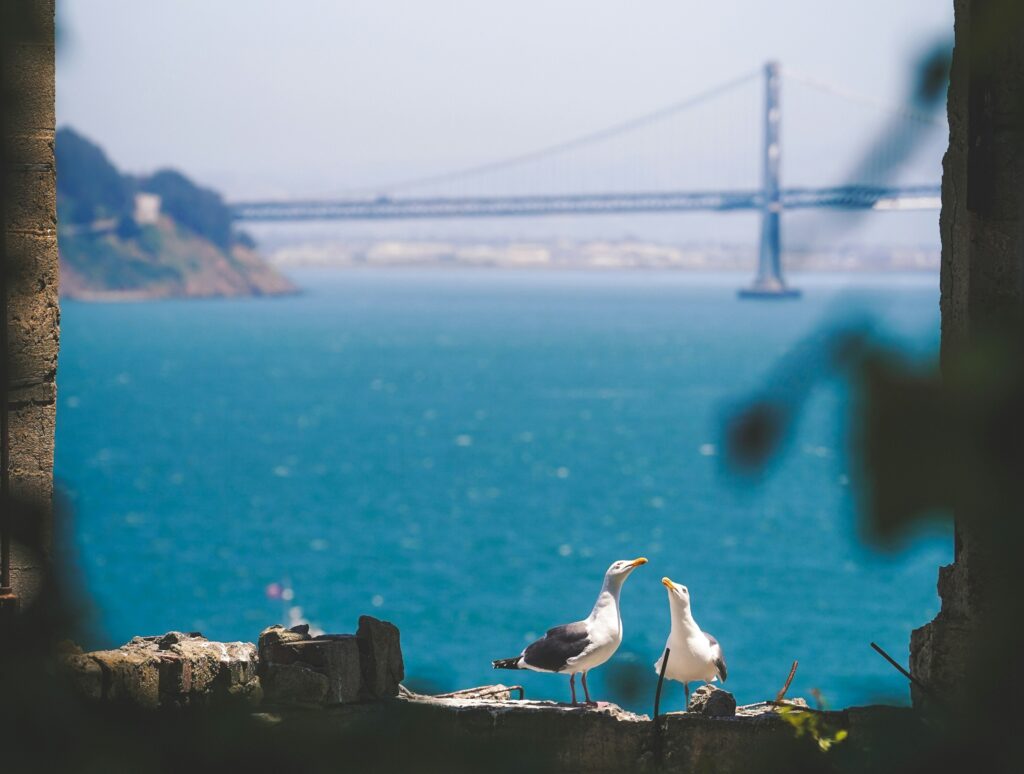
Hiking the Agave Trail lets you experience Alcatraz as part of the San Francisco Bay, not just as a tourist attraction. The constant soundtrack of waves against the rocks, the call of seabirds, and the distant hum of the city creates a more intimate experience of the island and its place within a larger ecological and human context, which is easily lost if all you visit is the crowded cellhouse with its tales of crime and punishment.
On windy days, which are frequent in the Bay Area, the salt spray hits your face as you round some corners of the trail. It’s a visceral reminder of the harsh natural forces that made this island such an effective prison and still an isolated habitat for birds and wildlife today.
I like to bring Alcatraz-sceptical visitors here to see how their understanding of Alcatraz transforms from a “tourist trap masquerading as a historical site” to a “harsh, beautiful, complex place” as we hike among agaves and sea anemones.
The Agave Trail is a beautiful example of Alcatraz’s ongoing transition from its harsh penitentiary past to its current role as a national park where history, culture, and nature intersect. It’s gone from prison to sanctuary, especially for wildlife, and nowhere is that more evident than on this often-missed bit of the island.
Looking for more nature to explore here? Check out my guide to the best Alcatraz Island gardens!
